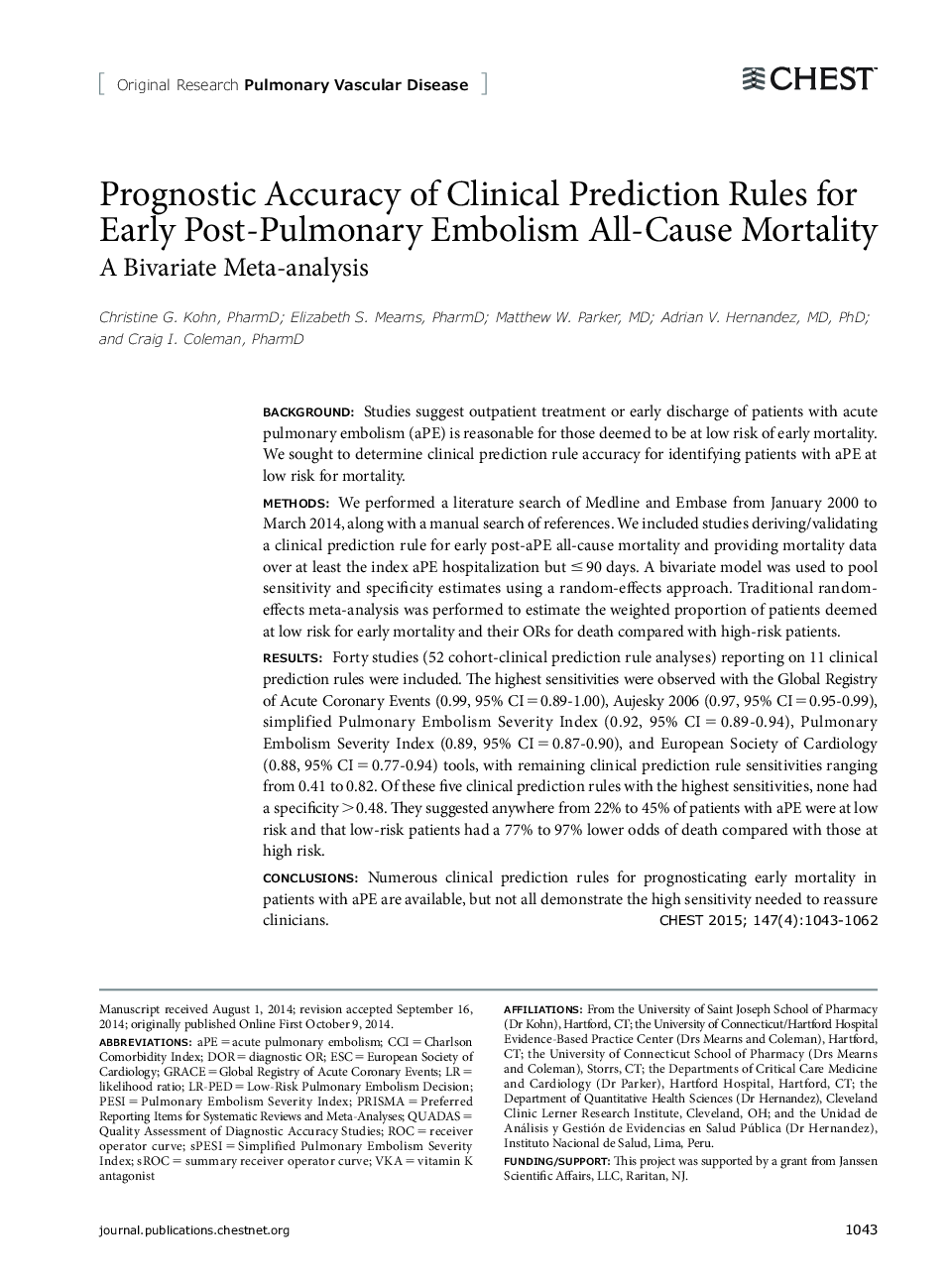| Article ID | Journal | Published Year | Pages | File Type |
|---|---|---|---|---|
| 2900138 | Chest | 2015 | 20 Pages |
BACKGROUND: Studies suggest outpatient treatment or early discharge of patients with acute pulmonary embolism (aPE) is reasonable for those deemed to be at low risk of early mortality. We sought to determine clinical prediction rule accuracy for identifying patients with aPE at low risk for mortality.METHODS: We performed a literature search of Medline and Embase from January 2000 to March 2014, along with a manual search of references. We included studies deriving/validating a clinical prediction rule for early post-aPE all-cause mortality and providing mortality data over at least the index aPE hospitalization but ≤ 90 days. A bivariate model was used to pool sensitivity and specificity estimates using a random-effects approach. Traditional random-effects meta-analysis was performed to estimate the weighted proportion of patients deemed at low risk for early mortality and their ORs for death compared with high-risk patients.RESULTS: Forty studies (52 cohort-clinical prediction rule analyses) reporting on 11 clinical prediction rules were included. The highest sensitivities were observed with the Global Registry of Acute Coronary Events (0.99, 95% CI = 0.89-1.00), Aujesky 2006 (0.97, 95% CI = 0.95-0.99), simplified Pulmonary Embolism Severity Index (0.92, 95% CI = 0.89-0.94), Pulmonary Embolism Severity Index (0.89, 95% CI = 0.87-0.90), and European Society of Cardiology (0.88, 95% CI = 0.77-0.94) tools, with remaining clinical prediction rule sensitivities ranging from 0.41 to 0.82. Of these five clinical prediction rules with the highest sensitivities, none had a specificity > 0.48. They suggested anywhere from 22% to 45% of patients with aPE were at low risk and that low-risk patients had a 77% to 97% lower odds of death compared with those at high risk.CONCLUSIONS: Numerous clinical prediction rules for prognosticating early mortality in patients with aPE are available, but not all demonstrate the high sensitivity needed to reassure clinicians.
